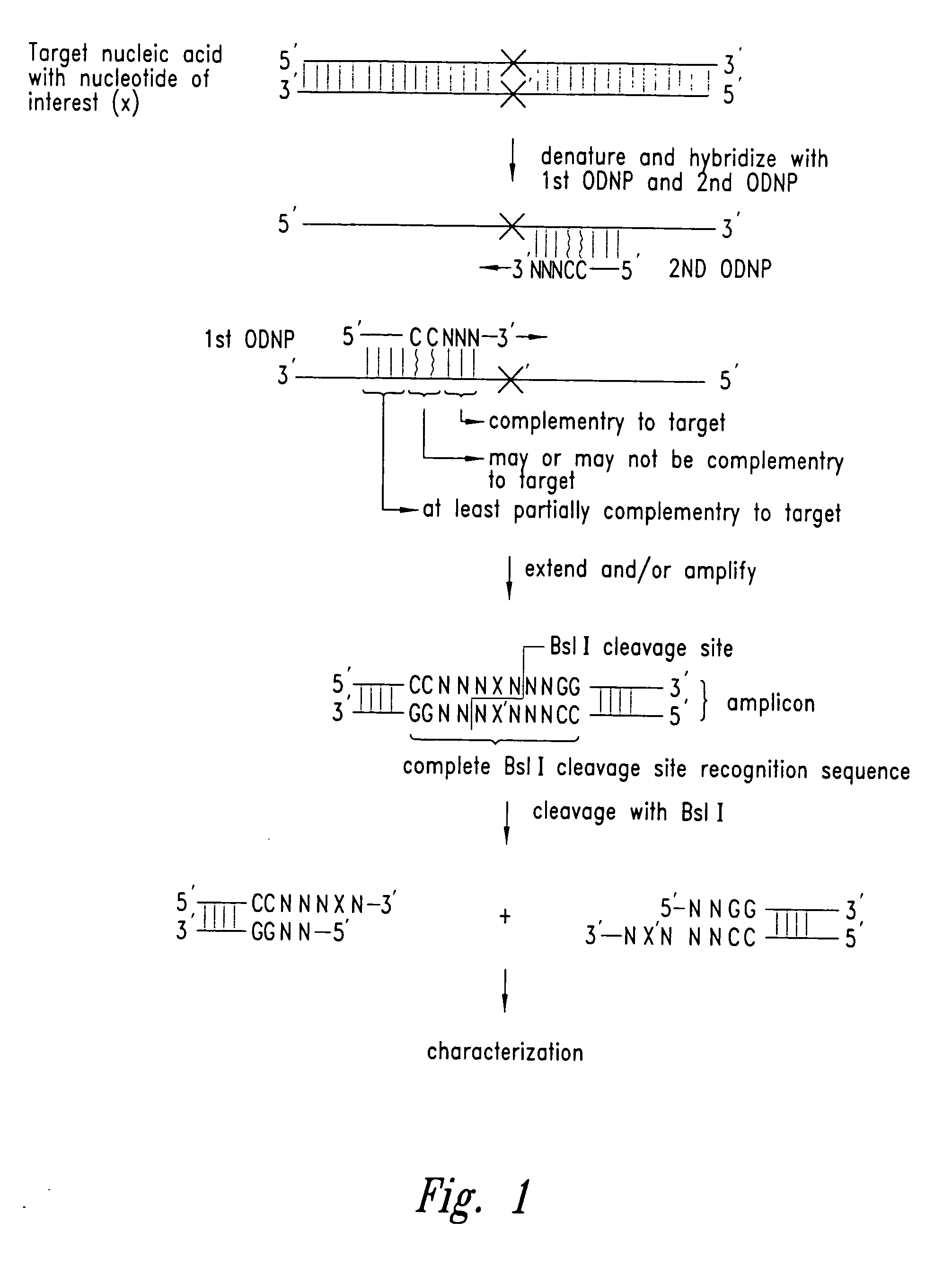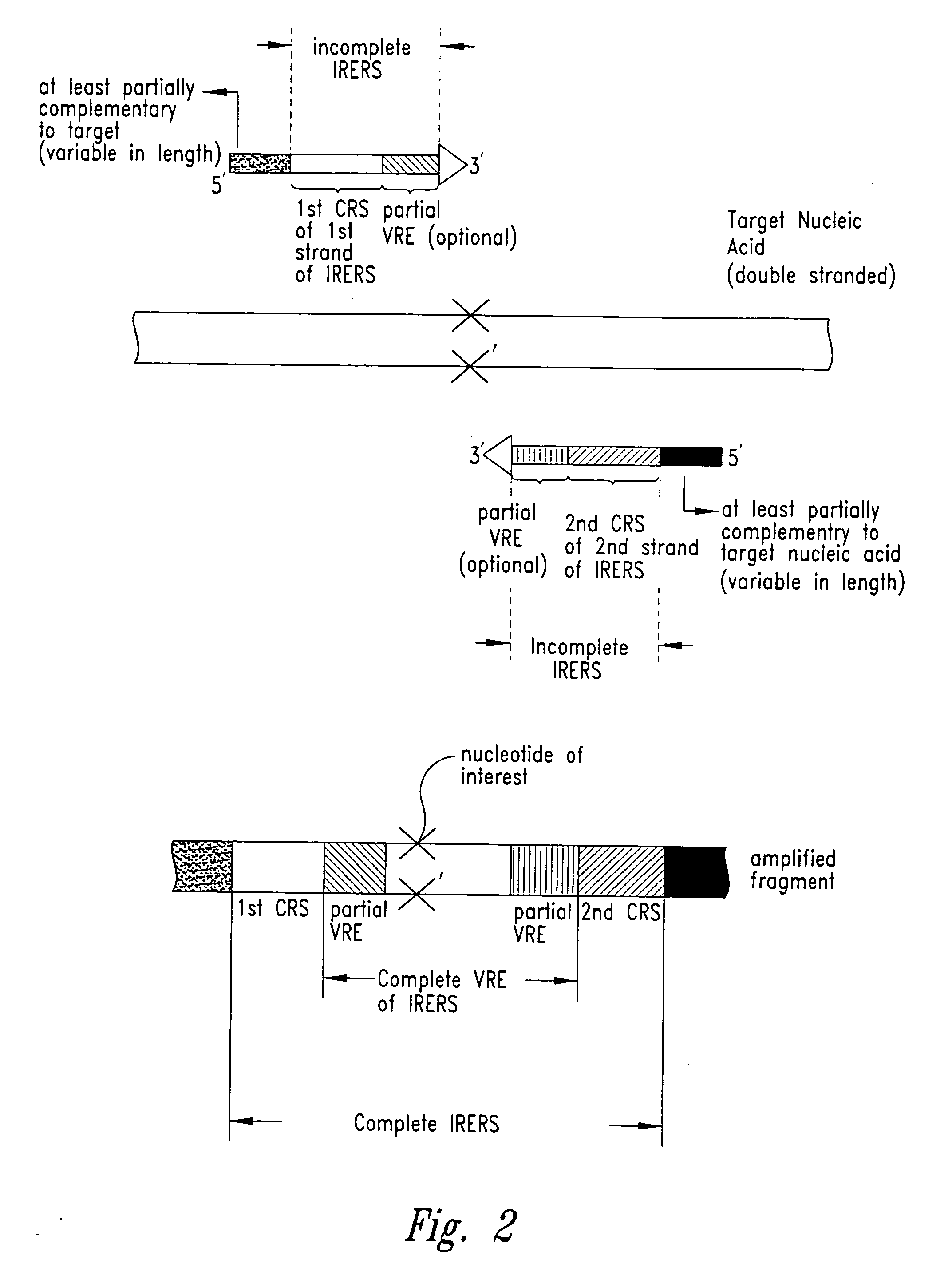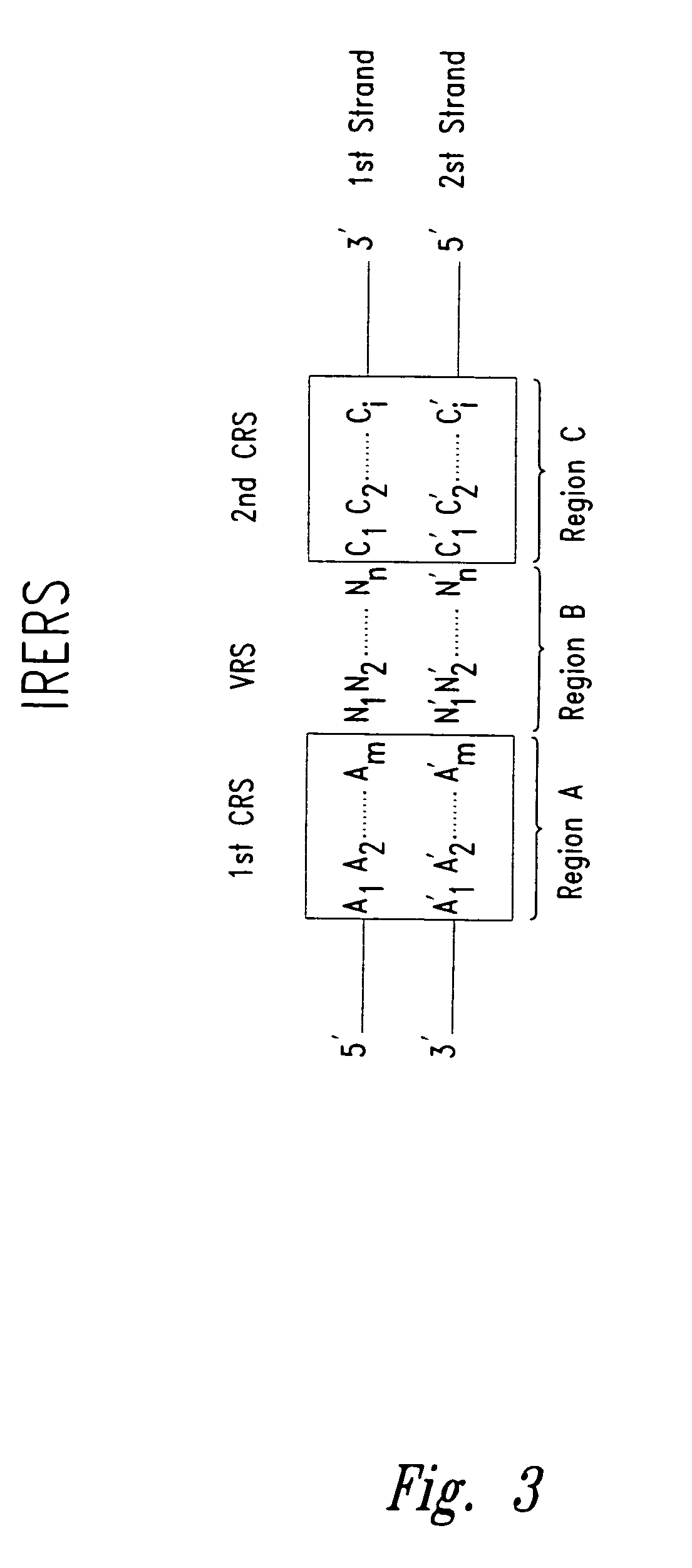Methods for identifying nucleotides at defined positions in target nucleic acids
a nucleotide and target nucleic acid technology, applied in the field of molecular biology, can solve the problems of generating tumors, unable to meet the needs of wide-scale applications, and the existing methodology for achieving such applications continues to pose technological and economic challenges, and none is sufficiently efficient and cost-effectiv
- Summary
- Abstract
- Description
- Claims
- Application Information
AI Technical Summary
Problems solved by technology
Method used
Image
Examples
Embodiment Construction
SEPARATION OF GENOTYPING FRAGNIENTS GENERATED BY BSL I DIGESTION AND SUBSEQUENT ANALYSIS BY LIQUID CHRONIATOGRAPHY AND DETECTION WITH A UV DETECTOR AND TIME OF FLIGHT MASS SPECTROMETER
[0239] The following example describes the amplification of a specific sequence from the human genome in which the primers contain the Bsl I restriction endonuclease recognition sequence. The resulting amplicon contains a cutting site that liberates a two double-strand oligonucleotide fragments, which is then subjected to a chromatography step and identified by mass to charge ratio.
[0240] The 50 .mu.l PCR reactions were composed of 25 ng genomic DNA. 0.5 .mu.M each forward and reverse primers, 10 mM Tris pH 8.3, 50 mM KCl, 1.5 mM MgCl.sub.2, 200 .mu.M each dNTP, 1 Unit DNA Polymerase (MasterAmp.TM. Taq DNA Polymerase from Epicentre Technologies, Madison Wis, or Vent exo-Polymerase New England BioLabs, Beverly Mass.). Thermocycling conditions were as follows: 95.degree. C. for 3 minutes followed by 30 c...
PUM
| Property | Measurement | Unit |
|---|---|---|
| Length | aaaaa | aaaaa |
| Electrical resistance | aaaaa | aaaaa |
| Acidity | aaaaa | aaaaa |
Abstract
Description
Claims
Application Information
 Login to View More
Login to View More - R&D
- Intellectual Property
- Life Sciences
- Materials
- Tech Scout
- Unparalleled Data Quality
- Higher Quality Content
- 60% Fewer Hallucinations
Browse by: Latest US Patents, China's latest patents, Technical Efficacy Thesaurus, Application Domain, Technology Topic, Popular Technical Reports.
© 2025 PatSnap. All rights reserved.Legal|Privacy policy|Modern Slavery Act Transparency Statement|Sitemap|About US| Contact US: help@patsnap.com



